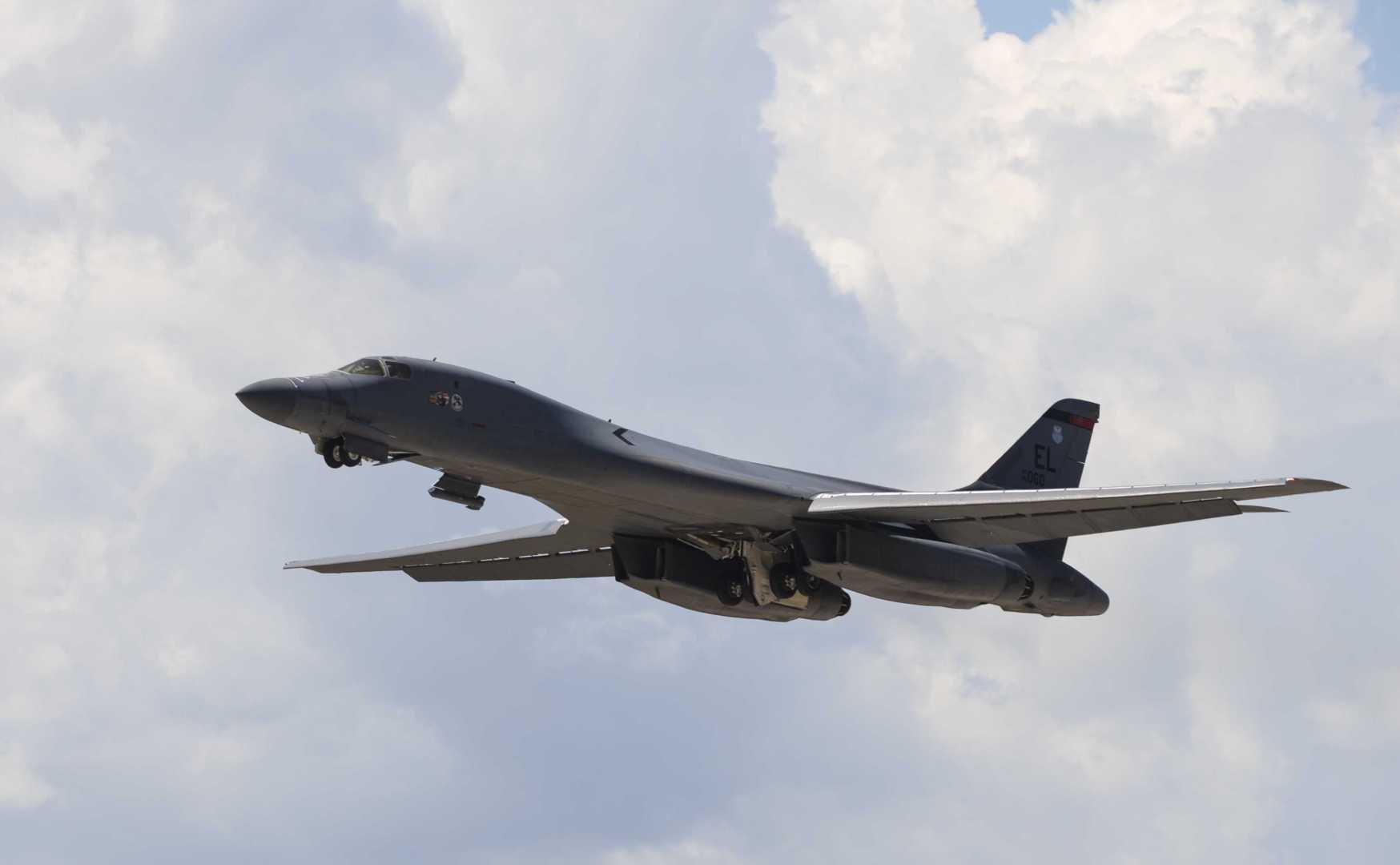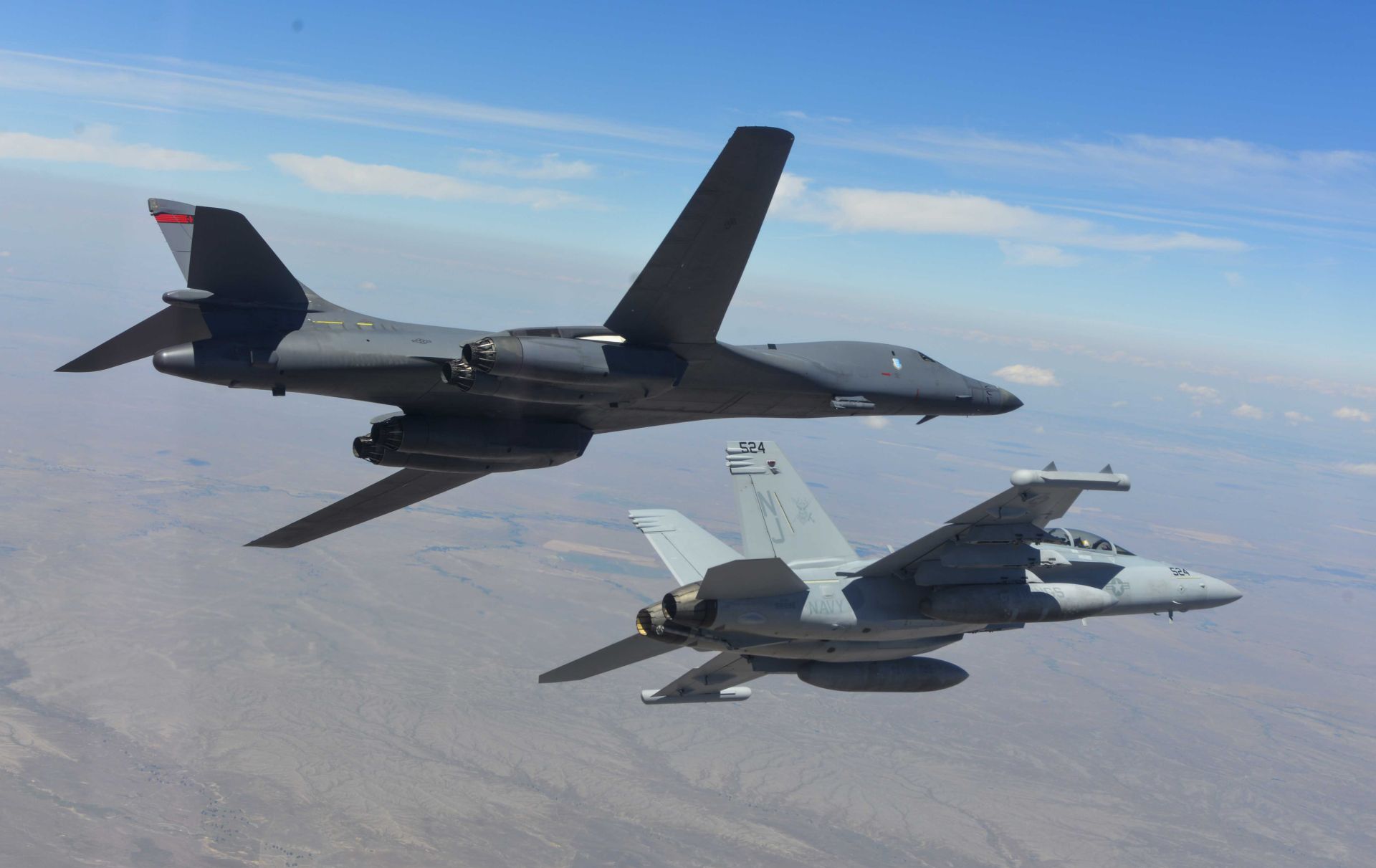Today, two U.S. Air Force B-1B strategic bombers from Andersen Air Force Base, Guam, conducted training with fighter aircraft from the Japan Air Self Defense Force (JASDF) and a low-level flight with fighter aircraft from the Republic of Korea (ROK) and the United States, in response to the recent nuclear test by North Korea.
In the vicinity of Japan, the B-1Bs conducted fighter interception training with two F-2 fighters from JASDF to enhance operational capabilities and the tactical skills of units. Proactively conducting such joint training between the JASDF and USAF corresponds with the policy directions given in the new Guidelines for Japan-U.S. Defense Cooperation and the National Defense Program Guidelines and strengthens cooperation.
Later in the flight, the JASDF and the ROK fighters conducted a hand-off of the U.S. B-1Bs in international airspace. Following the handoff, the B-1Bs and ROK F-15 fighter aircraft and U.S. F-16 fighter aircraft conducted a low-level flight in the vicinity of Osan, South Korea.
“These flights demonstrate the solidarity between South Korea, the United States, and Japan to defend against North Korea’s provocative and destabilizing actions,” said Adm. Harry B. Harris Jr., Commander, U.S. Pacific Command. “North Korea continues to blatantly violate its international obligations, threatening the region through an accelerating program of nuclear tests and unprecedented ballistic missile launches that no nation should tolerate. U.S. joint military forces in the Indo-Asia-Pacific are always ready to defend the American homeland. We stand resolutely with South Korea and Japan to honor our unshakable alliance commitments and to safeguard security and stability.”

The sequenced flights with Japan and ROK is the latest demonstration of the strength of the bilateral alliances between the United States and Japan and the Republic of Korea, and the broadening cooperation by the three nations in working to defend the respective homelands from threats posed by North Korea. Headquartered in Hawaii, U.S. Pacific Command is responsible for all U.S. Air Force, Army, Navy and Marine Corps forces over half the earth’s surface, stretching from the waters off the west coast of North America to the western border of India, and from Antarctica to the North Pole.
The B-1B Lancer is a long-range supersonic strategic bomber and part of the U.S. Pacific Command’s continuous bomber presence in the Indo-Asia-Pacific. Upon completion of the flight over Korea, the B-1Bs returned to Guam.










